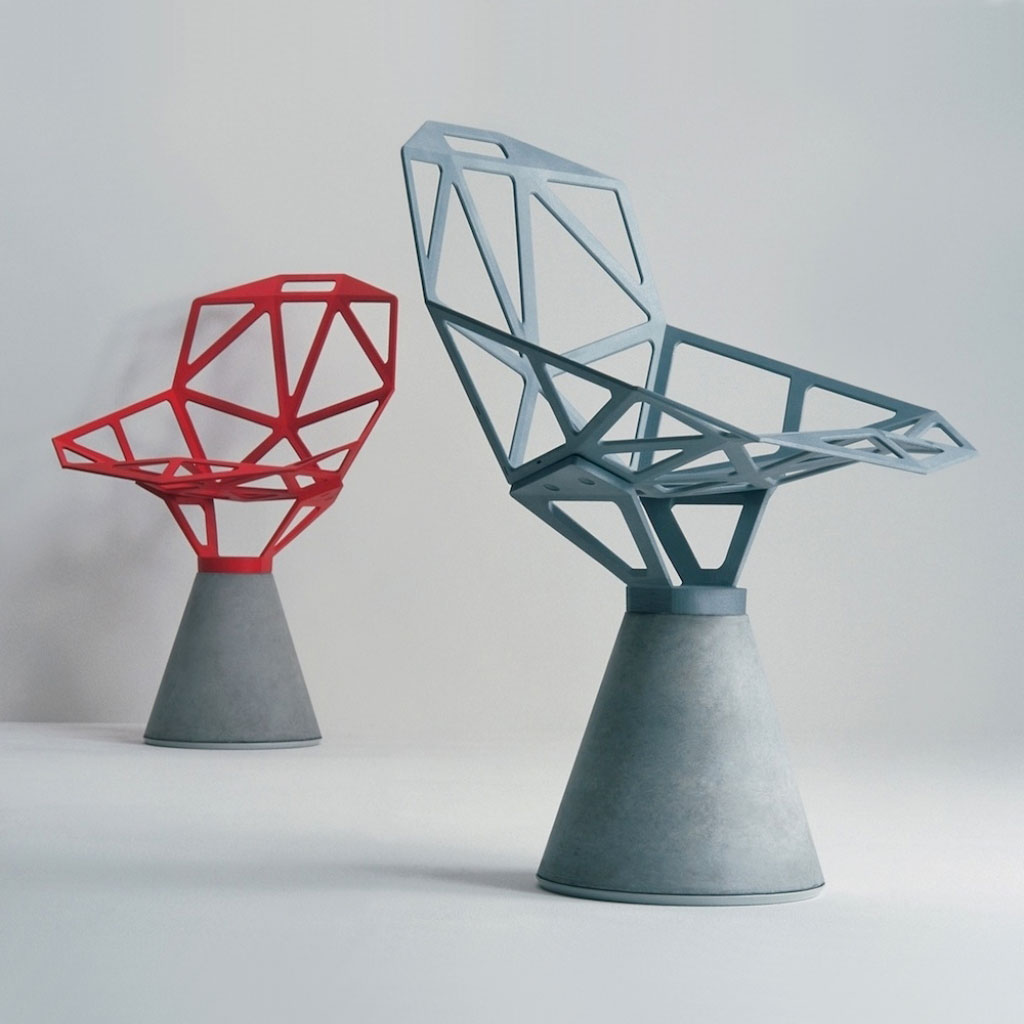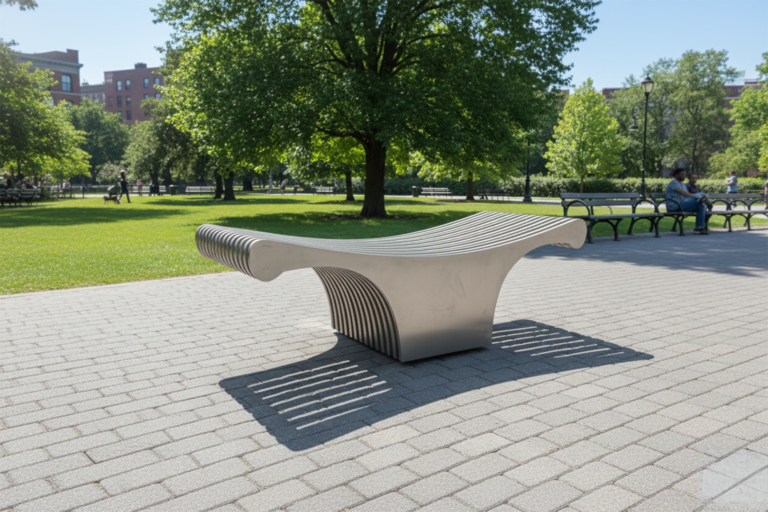Table of Contents
In the world of furniture and home furnishing design, computational and parametric approaches are revolutionizing how designers create innovative, functional, and customizable products. This fusion of design and technology not only enhances creativity but also optimizes the production process, allowing for more efficient, sustainable, and personalized solutions. In this blog post, we’ll explore how computational and parametric design is reshaping the furniture industry, along with real-life examples that demonstrate its potential.
Driving Innovation and Efficiency in Furniture Design
One of the most significant impacts of computational and parametric design on the furniture industry is its ability to enhance both creativity and efficiency. Designers can now explore complex forms, organic shapes, and novel structures that were once impractical or too time-consuming to develop manually. This opens the door to entirely new design languages, ranging from fluid, minimalist furniture to intricately patterned home accessories.
Beyond form, computational design allows for precise material optimization. This is especially important for sustainable furniture, where minimizing waste and reducing carbon footprints are key concerns. By calculating the most efficient use of materials, designers can ensure that each piece is not only visually appealing but also environmentally responsible.
Grcic’s Chair One
Take Chair One by Konstantin Grcic, for example. Its iconic, geometric design was made possible through computational methods that mapped out the structure to use minimal material without compromising stability. The chair’s distinct angular form is a perfect balance between innovative aesthetics and functional design, showcasing how computational techniques can result in lightweight, durable, and stylish furniture.
Personalization and Customization at Scale
The growing trend of personalized interiors means that consumers are seeking furniture tailored to their specific preferences, from unique dimensions to personalized finishes. Parametric design facilitates this by allowing manufacturers to offer endless customization options within a scalable framework.
For example, a modular shelving unit can be adapted to fit a customer’s exact wall dimensions with just a few clicks—no need to reinvent the entire design. This flexibility also extends to material choices and configurations, offering clients the chance to co-create their own furniture pieces. The result is a seamless blend of mass production and personal customization, giving consumers the power to adapt their furniture to their lifestyle and living spaces.
IKEA’s DELAKTIG Series
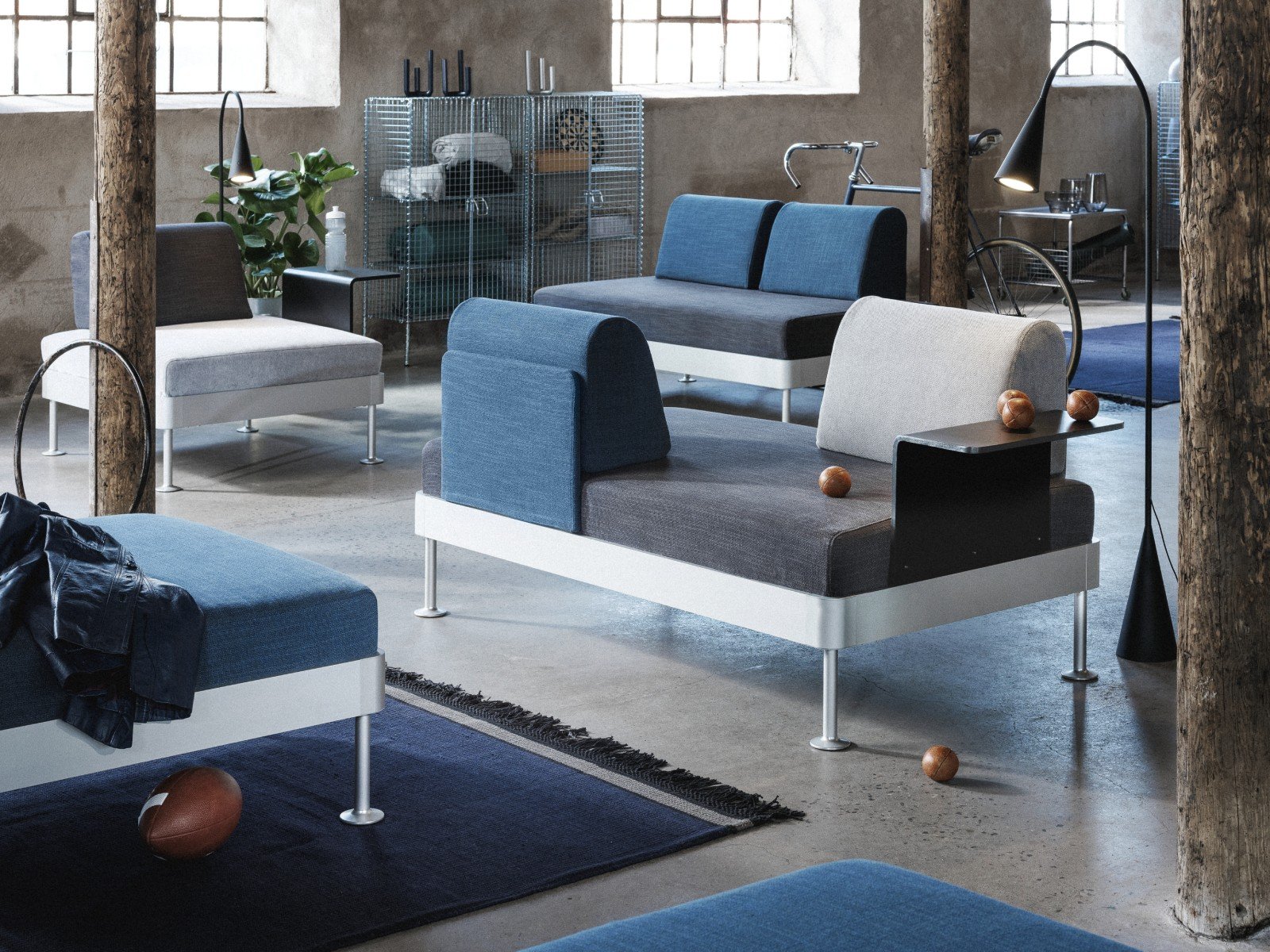
IKEA’s DELAKTIG series, developed with designer Tom Dixon, is an excellent example of this. The parametric design approach allowed IKEA to offer a modular sofa system that could be easily customized. Customers can configure it as a lounge chair, a sofa, or even a bed, while adding accessories like side tables or lamps. This flexibility empowers the user to modify the furniture as their needs change, all within a sustainable and scalable manufacturing process.
Transforming the Manufacturing Process
Computational design doesn’t stop at the drawing board; it also influences how furniture is made. Digital fabrication methods, such as 3D printing, CNC machining, and laser cutting, are closely integrated with computational design tools. This streamlines production by ensuring that complex designs can be easily translated into fabrication-ready files. Manufacturers can create prototypes faster, make adjustments on the fly, and move from concept to finished product more efficiently.
Moreover, these techniques reduce human error and waste. For example, with CNC machining, every cut is precise, ensuring optimal use of materials. This not only speeds up the manufacturing process but also reduces costs, making it more feasible to bring complex, high-quality designs to market.
Zaha Hadid’s Bow Furniture Collection

Zaha Hadid Architects applied computational design principles to their Bow collection, which features fluid, sculptural forms that mimic natural elements. This collection was produced using CNC technology, which allowed for precise and intricate shapes to be manufactured with minimal waste. The result was a collection that captured Hadid’s signature organic curves while maintaining the structural integrity required for functional furniture.
Enhancing Sustainability and Material Innovation
Sustainability is at the forefront of furniture design, and computational techniques play a critical role in this movement. Designers can now simulate and optimize the environmental impact of a design before it’s even produced. This means choosing materials that are not only aesthetically pleasing but also environmentally sustainable, and using them in ways that minimize waste and energy consumption.
Computational tools also enable the exploration of new, innovative materials, such as bioplastics, reclaimed wood, or 3D-printed composites. Parametric design allows these materials to be incorporated into products in ways that would be impossible with traditional design methods, further driving innovation in sustainable furniture.
Philippe Starck’s AI Chair
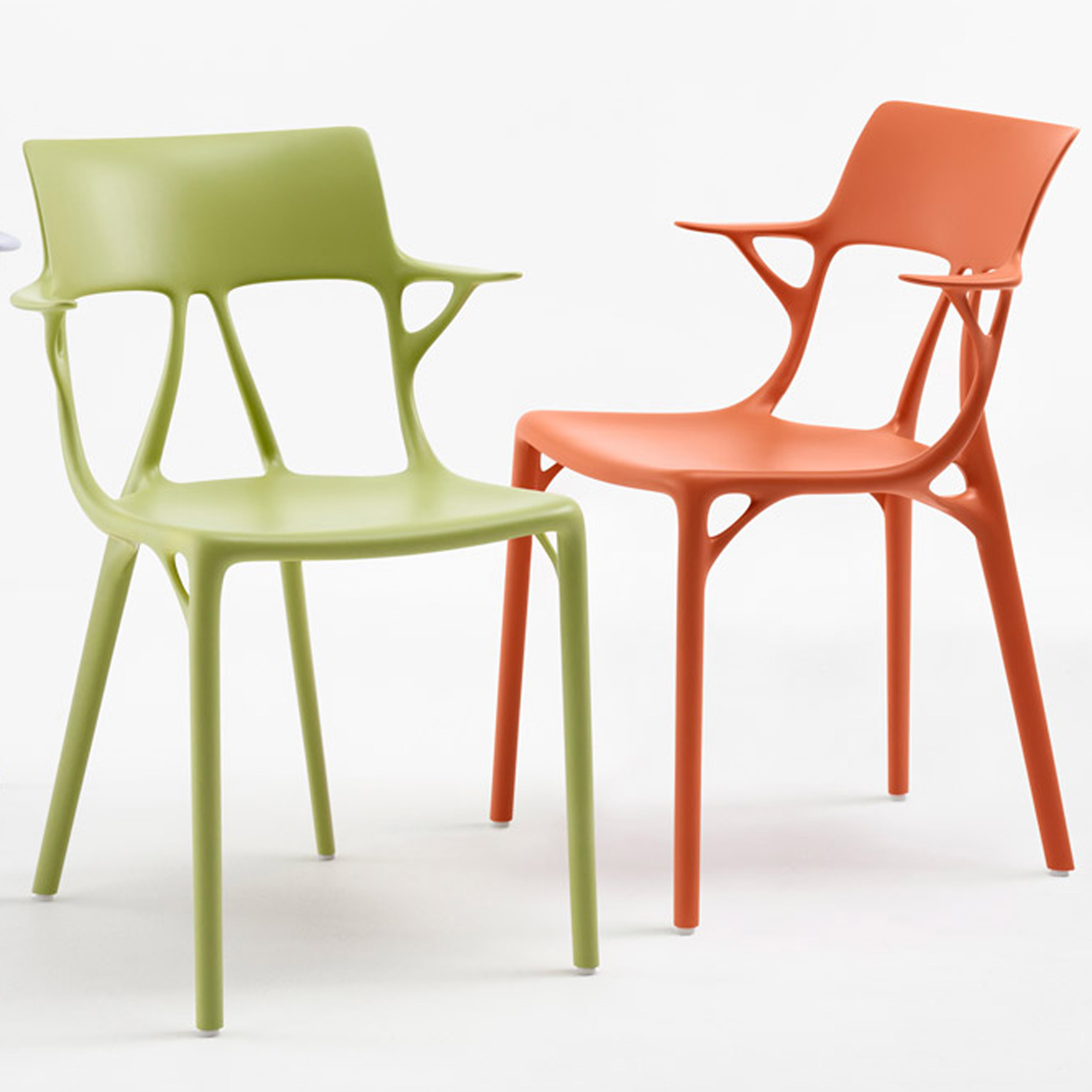
Designer Philippe Starck collaborated with furniture brand Kartell to create the AI Chair, the first chair designed using artificial intelligence and computational design. By inputting structural and ergonomic requirements into an AI system, the chair’s design was optimized for both material efficiency and user comfort. This cutting-edge approach reduced waste and created a product that is not only beautiful but also more sustainable.
Here are some other real-life examples of furniture and home furnishings where computational and parametric design have been successfully implemented
Handmade Teak Sun Chair by John Brevard Design Studio
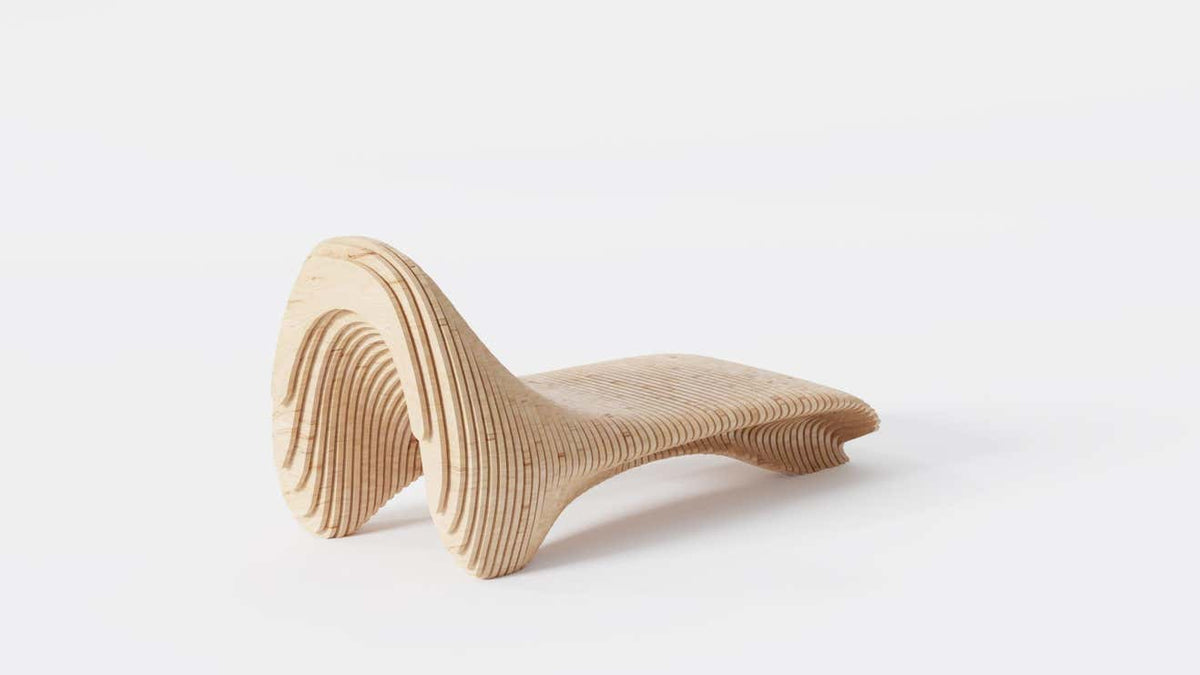
The Handmade Teak Sun Chair by John Brevard showcases the studio’s innovative use of parametric design to blend organic form with craftsmanship. Inspired by the geometry of the sun, the chair’s design employs parametric modeling to generate complex, flowing curves and fractal-like patterns that echo natural symmetries. Through this computational approach, Brevard was able to optimize the structure, ensuring both comfort and visual balance while using minimal material. The result is a sculptural yet functional piece, where each component fits seamlessly together, demonstrating the power of computational techniques in elevating traditional craftsmanship.
Cardboard Hypar Table by Nordwerk Design
![Cardboard Furniture Designs by Nordwerk recyclingDESIGN [1200x1600] : r/DesignPorn](https://i.redd.it/763911aodacy.jpg)
The Cardboard Hypar Table by Nordwerk Design exemplifies the power of computational design combined with advanced fabrication techniques like CNC machining. By using computational algorithms, the table’s hyperbolic paraboloid (hypar) form was optimized for both strength and material efficiency. CNC machining played a crucial role in bringing this complex geometry to life, allowing for the precise cutting of corrugated cardboard sheets according to the digital design. This technology enabled the production of intricate, repeatable components with minimal waste, supporting the table’s sustainable ethos.
3D-Printed Furniture by Joris Laarman
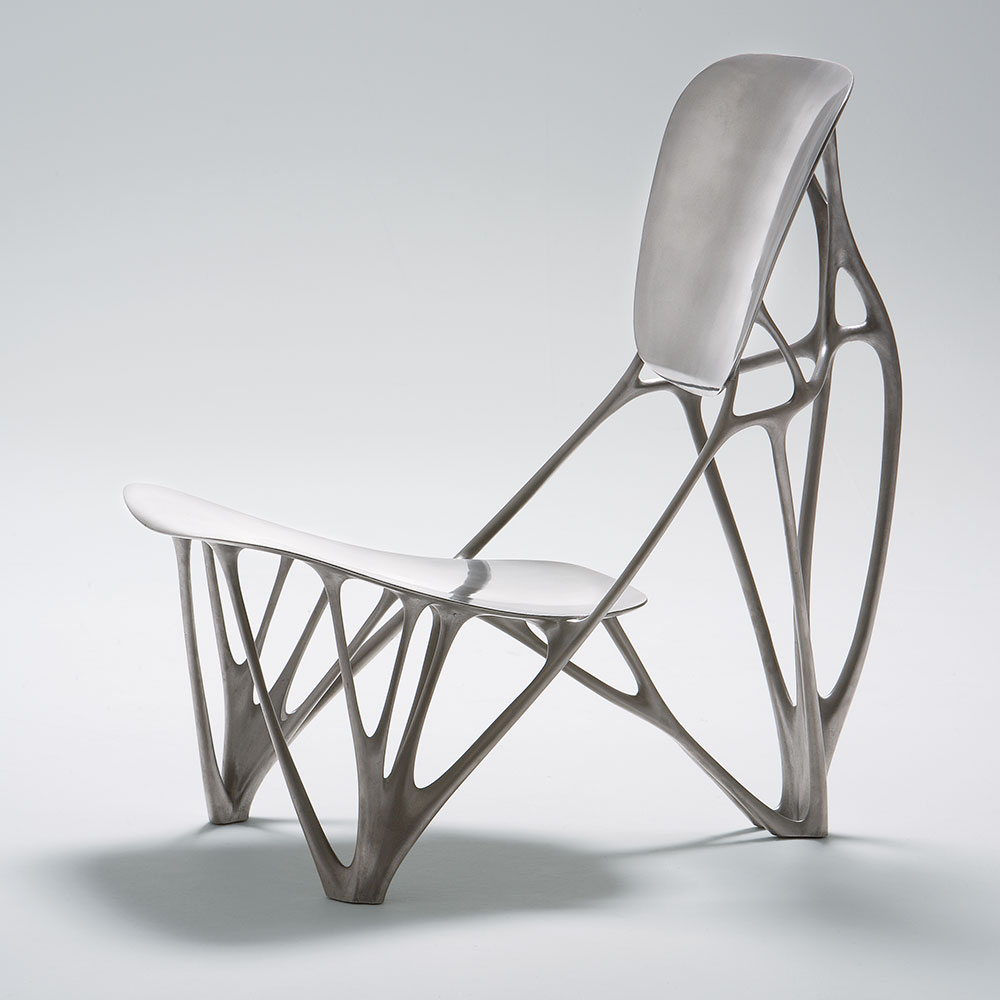
Joris Laarman is known for his innovative approach to furniture design using computational methods. His Bone Chair, for example, employs parametric design to create a structure that mimics the complexity of organic forms. The chair was produced using 3D printing, allowing for intricate geometries that traditional manufacturing methods cannot achieve. This design reflects a synthesis of art and engineering, emphasizing the potential of computational design in creating unique furniture pieces.
The Rising Table by Robert van Embricqs

The Rising Table by Robert van Embricqs is a striking example of computational design, merging aesthetics with innovative functionality. This sculptural table features an intricate, origami-inspired design that appears to rise from the ground, creating a dynamic visual effect. Crafted from layers of thin wood, the table is not only lightweight but also structurally sound, thanks to precise calculations made possible through advanced digital modeling techniques.
Parametric Bookshelf by Arik Levy

The Arie Bookshelf by Arik Levy showcases complex geometries and fluid forms, all achieved through the use of parametric modeling techniques. The design process involved algorithms that allowed Levy to experiment with different configurations and shapes, resulting in a highly customizable shelving system. Each section of the bookshelf can be adjusted in size and form to accommodate various books and objects, offering both functional storage and a visually captivating centerpiece. It can serve as a sleek shelving wall in a straight line or as an elegant corner solution, featuring seamless docking points on both the inside and outside for uniformity in length and depth.
Why Parametric Design Matters for the Future of Furniture
The real-life examples above illustrate how parametric design tools, digital fabrication, and computational algorithms are reshaping the world of furniture and home furnishings. Parametric design allows for:
- Customization: Designs can be easily adjusted to fit specific spaces or user needs, offering personalized furniture solutions.
- Material Efficiency: Algorithms can optimize designs to minimize material waste, making the production process more sustainable.
- Complex Geometries: Shapes that were previously impossible to create can now be generated with precision, opening up new aesthetic possibilities.
- Sustainability: By using digital tools, designers can create modular, flat-pack furniture that reduces transportation costs and supports local production.
Beegraphy
Beegraphy is an innovative design platform that empowers creators to explore the vast possibilities of parametric design and computational creativity. By providing advanced tools and resources, Beegraphy enables designers, architects, and artists to push the boundaries of traditional design processes. The platform emphasizes sustainability, customization, and the integration of technology in design, making it accessible for professionals and enthusiasts alike. With a focus on community engagement and collaborative projects, Beegraphy encourages users to share their unique perspectives and ideas, fostering an environment of continuous learning and inspiration in the ever-evolving world of design.
Beegraphy Design Challenge : Furniture and Home Furnishing
The Beegraphy Design Challenge Series is a call to creators to embrace these principles and explore the fusion of technology and artistry in furniture design. Whether your focus is on sustainability, customization, or pushing the boundaries of form, this challenge is an opportunity to showcase how parametric tools can redefine our living spaces.

The Jury Panel for the furniture category of the Beegraphy Design Awards features two distinguished experts. Hamid Hassanzadeh, a renowned computational designer and founder of ParametricArchitecture, specializes in using advanced algorithms and parametric tools to create innovative structures that challenge traditional design boundaries. Kourosh Hajizadeh is an award-winning architect celebrated for his pioneering contributions to architectural innovation, focusing on the intersections of technology, sustainability, and aesthetics. Their diverse expertise enriches the judging process, ensuring that the awarded designs exemplify excellence in creativity, sustainability, and technological advancement within the furniture industry, reflecting the future of adaptable and innovative design.
As you prepare your submission, think about how you can integrate the real-world applications of parametric design seen in the examples above. Let algorithms enhance your creativity and bring your vision to life.



